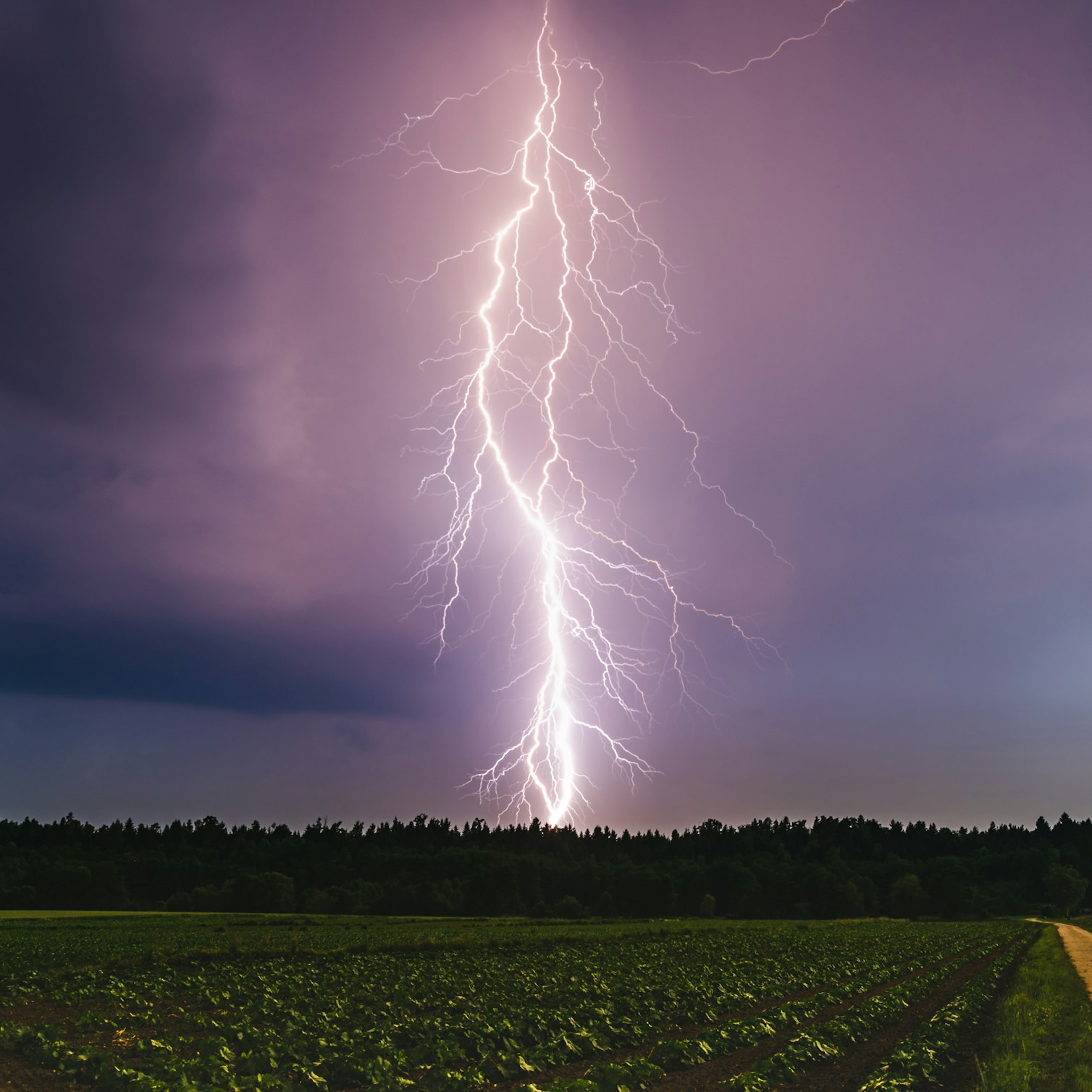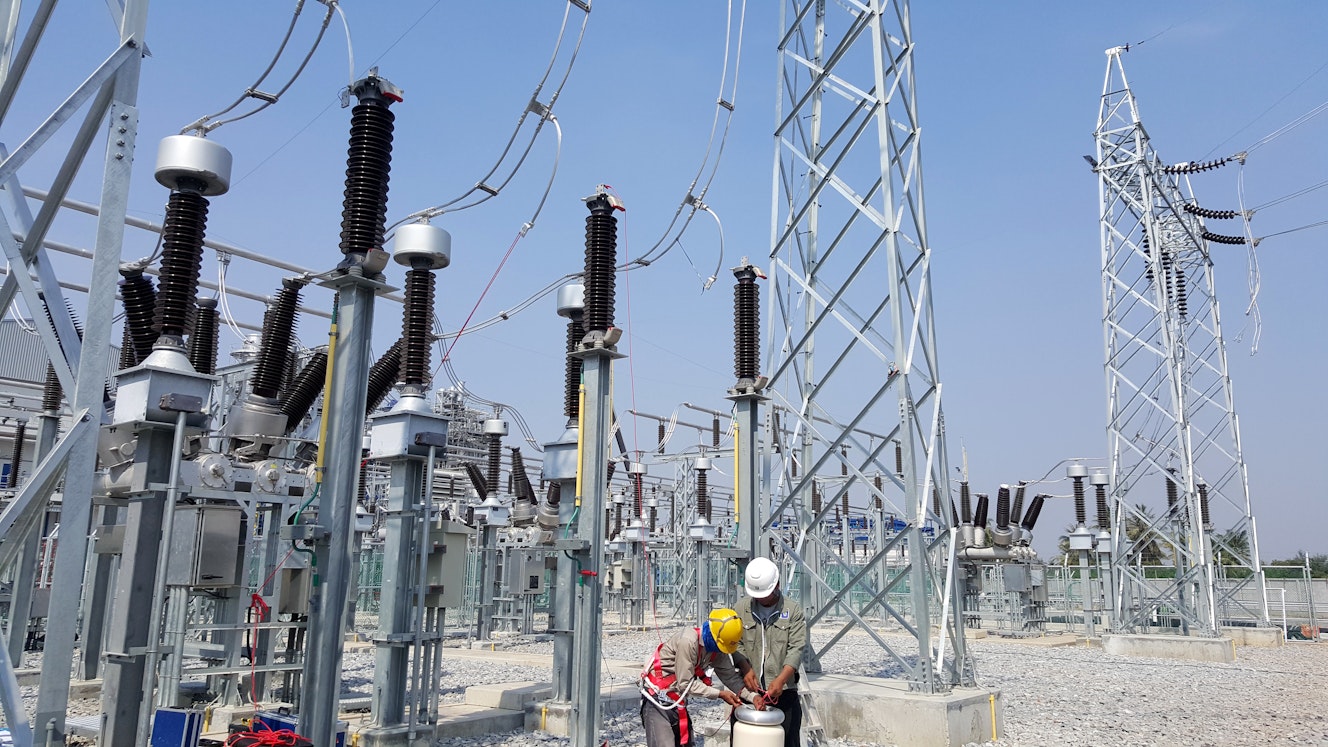- Solar energy blog
- Surge Protection Device (SPD): What is of utmost necessity for a solar plant?
Surge Protection Device (SPD): What is of utmost necessity for a solar plant?


Hassan Farhat
Lead Technical Advisor
Hassan Farhat has a background in Energy Engineering and excelled in his Master of Science in Renewable Energy in Electrical Systems. More than three years ago, he joined the RatedPower technical team, where he works as a Solar Photovoltaic Engineer and Customer Success Manager at RatedPower.
Hassan has a thorough understanding of the industry and of RatedPower’s pvDesign, the digital solution to reduce LCOE and maximize productivity of utility-scale PV plants. He's passionate for renewable energies and their role within the global environmental transition.

Content
Solar photovoltaic (PV) plants are susceptible to electrical surges, which can cause costly damage to equipment and result in temporary power supply outages.
Electrical surges can be caused by external factors such as lightning strikes, internal malfunctions, or fluctuations in the electrical grid. The large surface areas and exposed placements, such as on rooftops or on the ground in open spaces, make solar panels prone to lightning strikes that can shorten their lifespan.
So, how can you design a PV system to protect it from power surges and ensure it operates at optimal efficiency?

Watch the recorded webinar "A utility-scale solar guide to plant interconnection for maximizing efficiency" for expert insights from industry leaders in renewable energy software solutions.
Protecting against electrical surges in PV plants
To protect PV installations, whether household or large-scale systems, they should be designed following certain protocols. Devices like lightning arresters and surge protection devices (SPDs) should be installed to ensure the system operates safely and countermeasures are in place against any potential power surges.
These devices protect electrical systems against permanent or transient overvoltages caused by defects in the conductor or failures in transformers.
Transient overvoltages are temporary spikes in voltage to more than 10% above the distribution network’s nominal value for several cycles.
In permanent overvoltages, the voltage level remains high permanently.
Permanent overvoltages can disrupt systems in several ways:
Damaging equipment
Causing fires or explosions
Reducing equipment lifespans
Interrupting supply
Disruptions to the supply of electricity from PV installations can reduce the amount of solar energy used or sold to the grid, so they should be designed with surge protection devices in place.
Lightning arresters vs. SPDs
Lightning arresters are devices that protect electrical systems by using earthing or grounding wires to divert high-voltage surges caused by direct lightning strikes to the ground. They are mounted on power transmission towers, poles, and buildings to discharge the current safely.
When a surge passes through the conductor, it interrupts the insulation of the arrester so that it can travel to the ground. Once the voltage level returns to normal, the insulation between the conductor and the ground is restored and the flow of the current toward the ground stops.
Surge arresters, or SPDs, do not stop or absorb surges caused by lightning — instead, they bypass or discharge surges to limit damage to electrical equipment inside a property. These devices prevent continued flow of high-voltage currents, directing them to the ground.
SPDS can be installed on circuit breakers inside homes and on transformers, substations, or poles to protect homes and substations from surges.

What happens to a solar plant when surges occur?
If a solar PV plant experiences a surge and is not protected with lightning and/or surge arresters, it can suffer equipment damage ranging from lightning burning holes in the panels to degradation of modules and inverters, or secondary systems such as monitoring equipment and tracker controls.
Even if there are no initial power outages, the installation can still suffer secondary effects from equipment damages, which can reduce the amount of power the system can generate. These effects are sometimes mistakenly attributed to equipment failures or manufacturing defects if it is not immediately apparent that they were caused by a surge.
If a PV module is damaged it results in loss of power output from a string, whereas damage to an inverter can cut limit output from a large section of the installation.
Some developers might opt not to include surge protection devices to keep down the initial cost of a project. However, this can result in higher maintenance costs down the line if equipment is damaged by a surge and needs to be repaired or replaced.
It will potentially save money on total system costs to investigate whether a plant will be located in an area prone to lightning strikes and install lightning arresters.
In some countries, there are mandatory standards that require lightning arresters and SPDs to be installed. In September 2017, the International Electrotechnical Commission (IEC) released the IEC 61643-32 ED1 standard, setting out principles for the use of SPDs in PV systems.
Awareness of the financial and operational risks of surges in PV systems is still relatively low in the US, whereas other countries commonly install comprehensive surge protection.
How to incorporate surge protection into PV plants
In solar arrays, lightning arresters and SPDs specifically designed for PV installations should be installed throughout the alternating current (AC) and direct current (DC) power distribution systems to protect vital components.
Developers should install surge arresters upstream of the devices they need to protect and SPDs should be able to withstand short circuit currents that are greater than the solar array’s short circuit current.
The SPD requirements for a PV plant that has external lightning protection will depend on whether the separation between the lightning arrester and the installation is isolated.
Inverters tend to be the costliest components in PV installations, so it is critical to install the right equipment. Developers should install SPDs on inverters to protect the DC inputs and AC outputs, with grounding on both the positive and negative DC lines. AC protection should couple each power conductor to the ground.
Combiner and control circuits, as well as monitoring and tracking systems, should be protected to prevent interference with electricity flows and loss of data.
Design your PV plant with effective surge protection
Solar PV generation is essential to the clean energy transition, so it must be protected to avoid power losses.
Installing lightning arresters and surge protection devices can help to prevent damage from power surges to keep PV systems running at full capacity and providing the expected return on investment.
Rated Power specializes in helping solar PV developers to design installations that run efficiently and provide the best return on investment. To learn more about optimizing PV system design, follow our blog!
Latest stories
Related posts
Technology and engineering
Outsmarting congestion: How efficient solar design helps navigate Nordic grid limits
Learn how Nordic operators and solar developers are adjusting to tighter grid conditions and how policy and design decisions are keeping projects on track.
Updated 16 DEC, 25

Technology and engineering
The rise of ultra-thin perovskite solar cells
Learn about Japan’s $1.5B initiative to commercialize ultra-thin, flexible perovskite solar cells and how it could transform the solar landscape globally.
Updated 30 SEP, 25

Technology and engineering
The green hydrogen boom in LatAm
Latin America is emerging as a green hydrogen leader. Learn how LatAm countries are leveraging solar and wind power to drive green hydrogen production.
Updated 22 JUL, 25

- RatedPower
- Solar energy blog
- Surge Protection Device (SPD): What is of utmost necessity for a solar plant?
 Watch a demo
Watch a demo Ask our AI Product Expert
Ask our AI Product Expert

